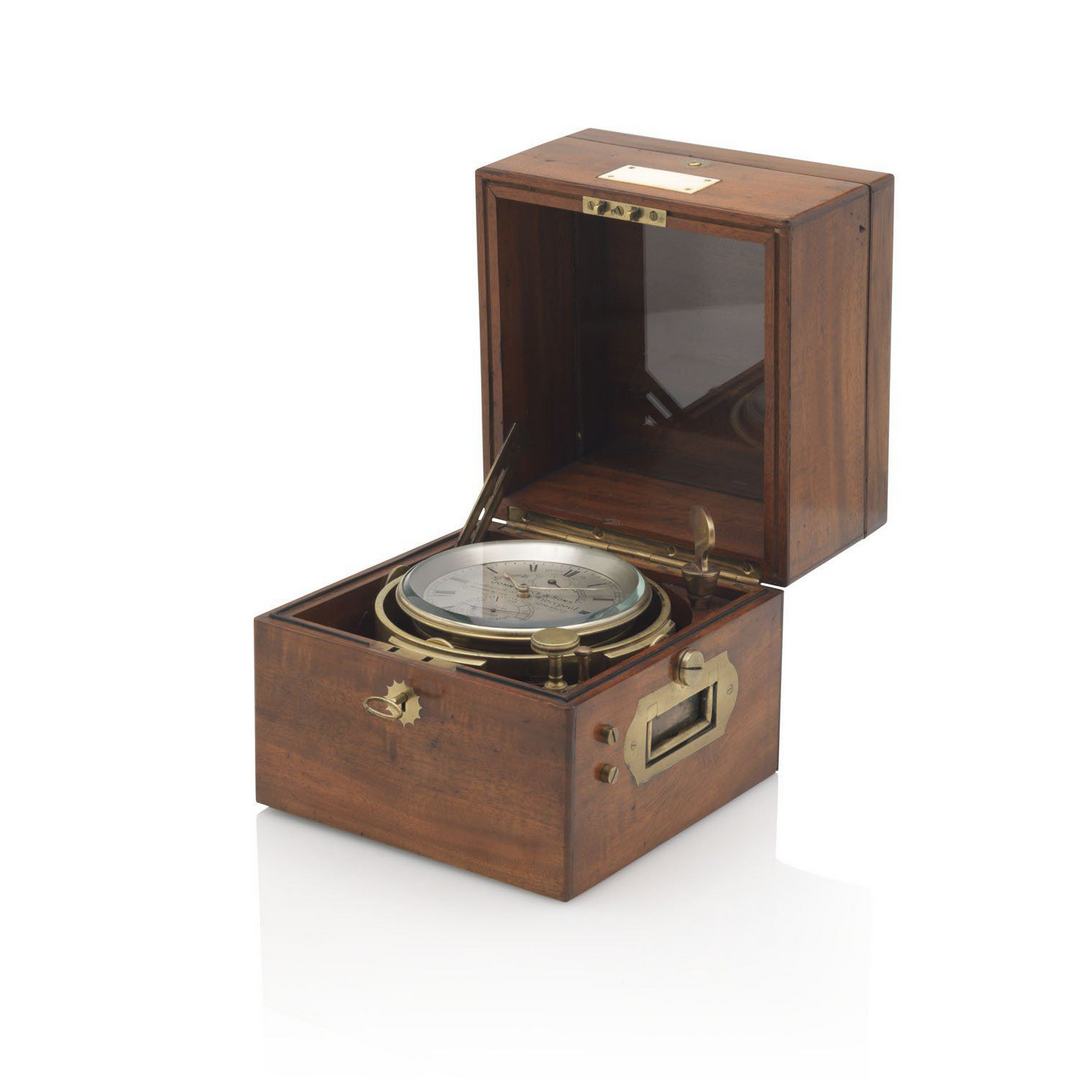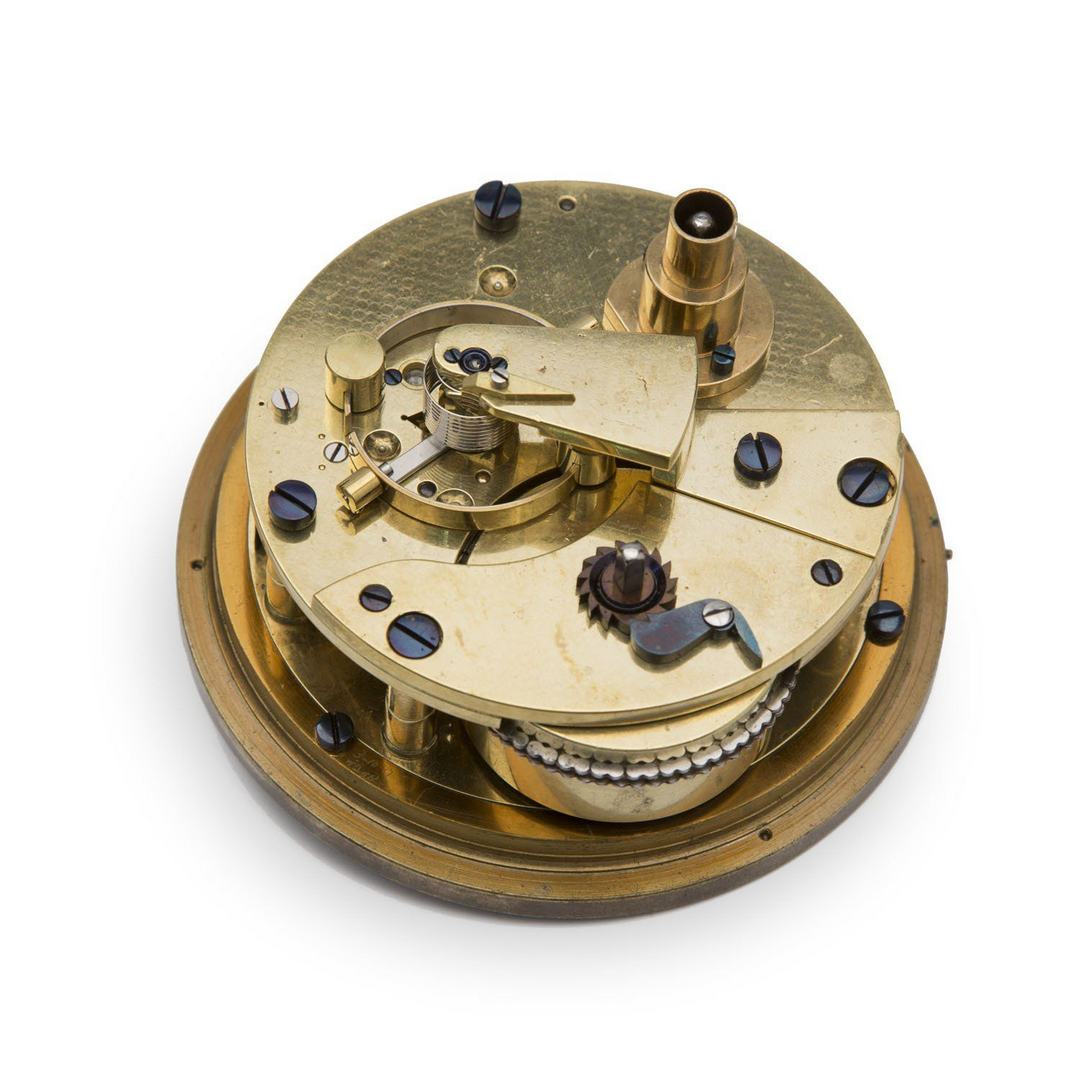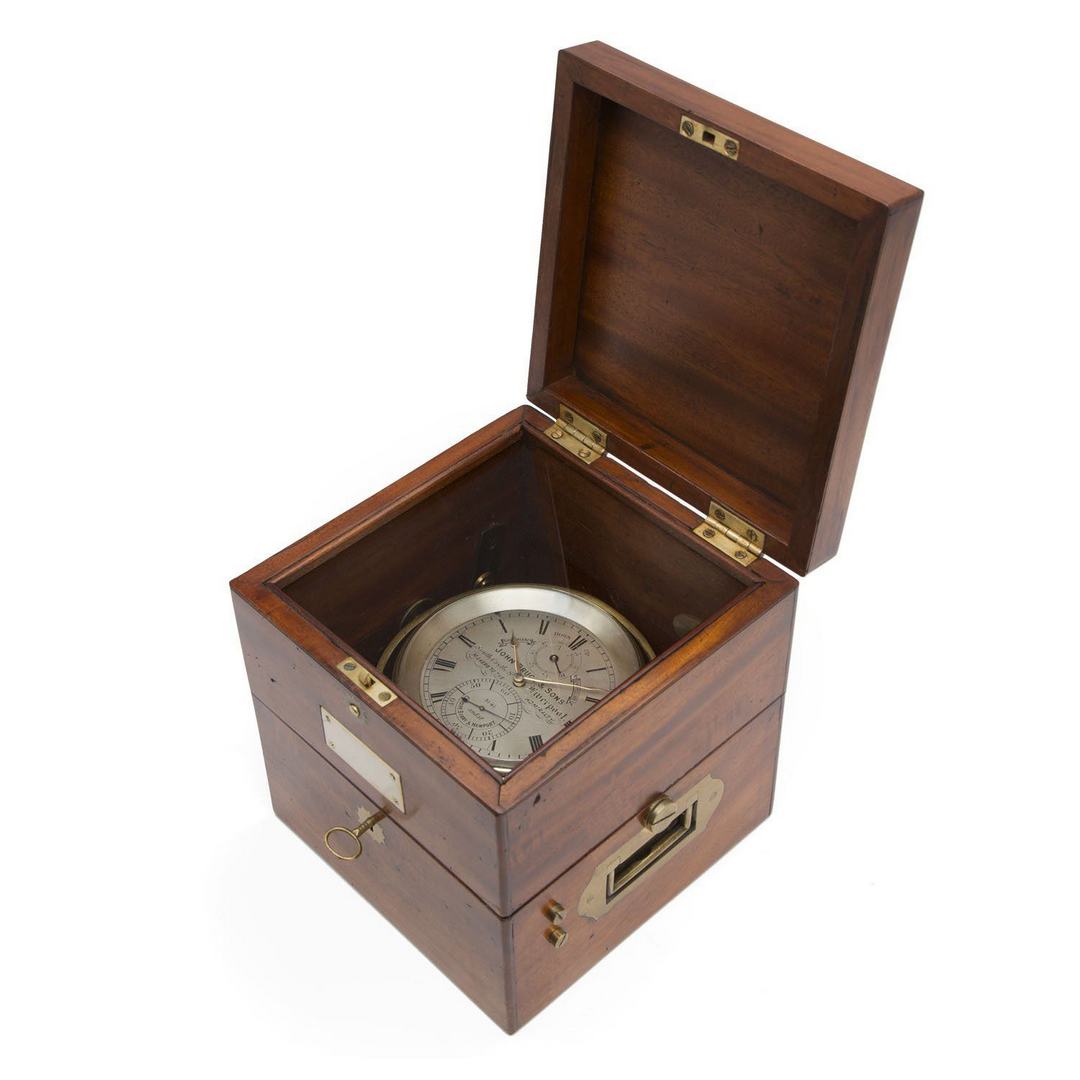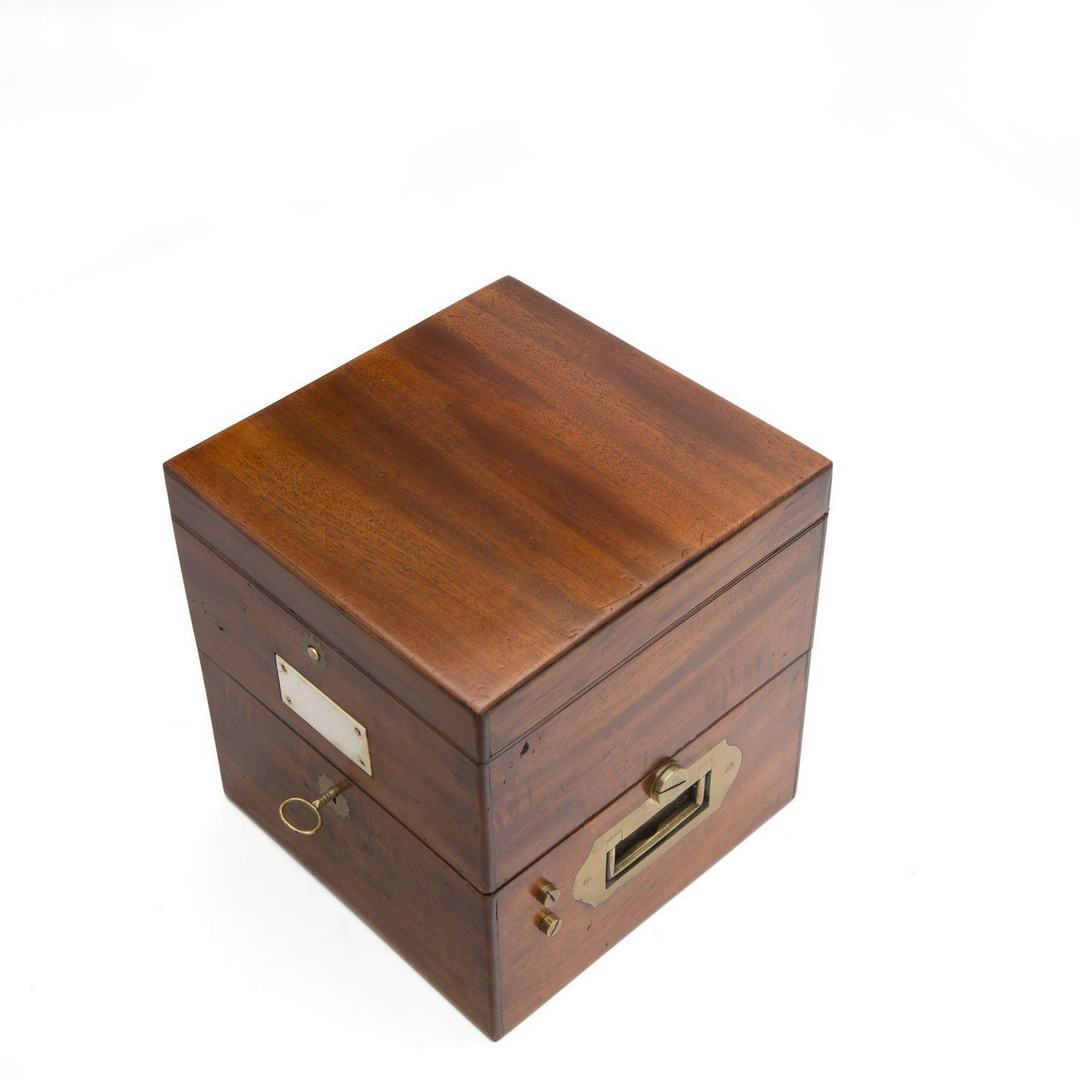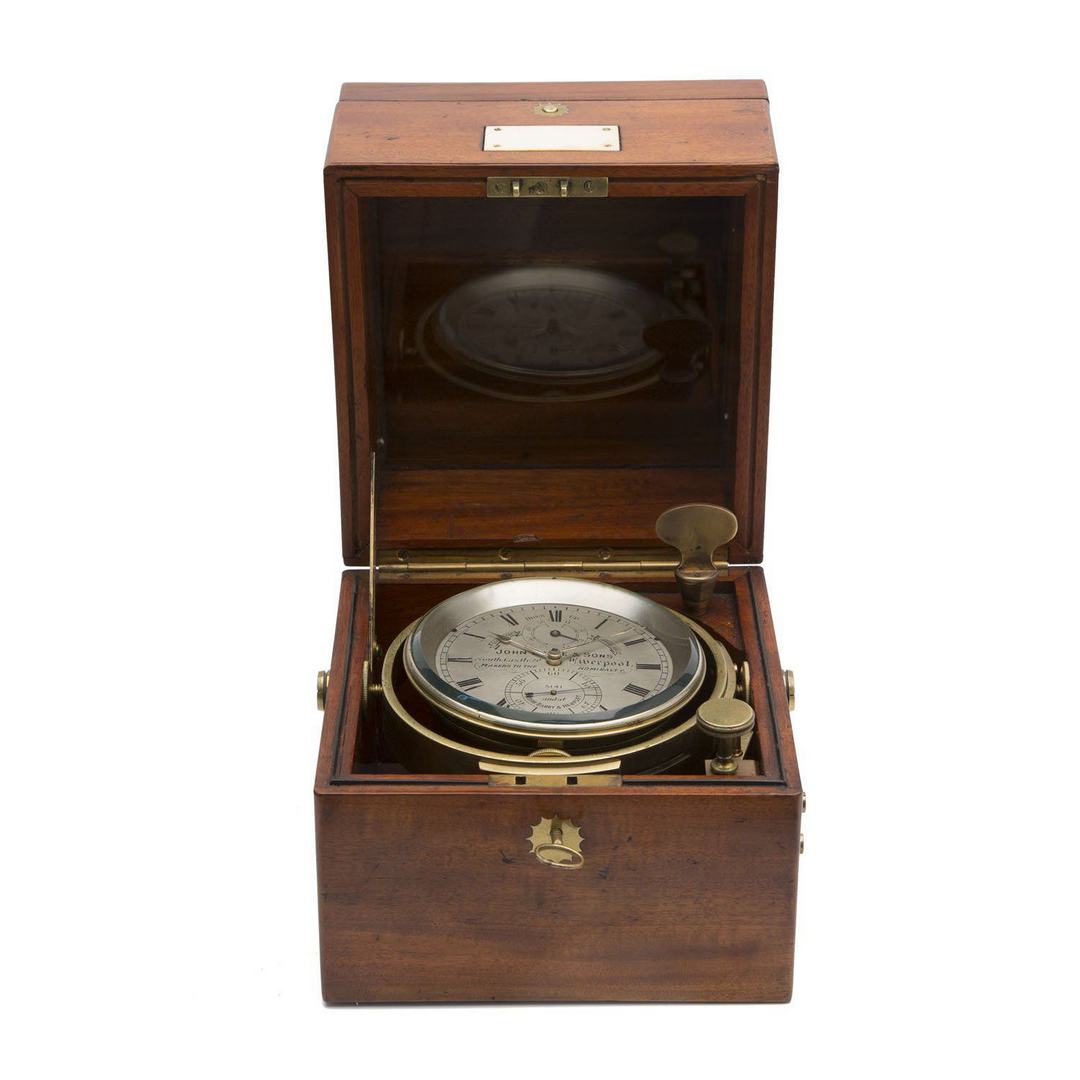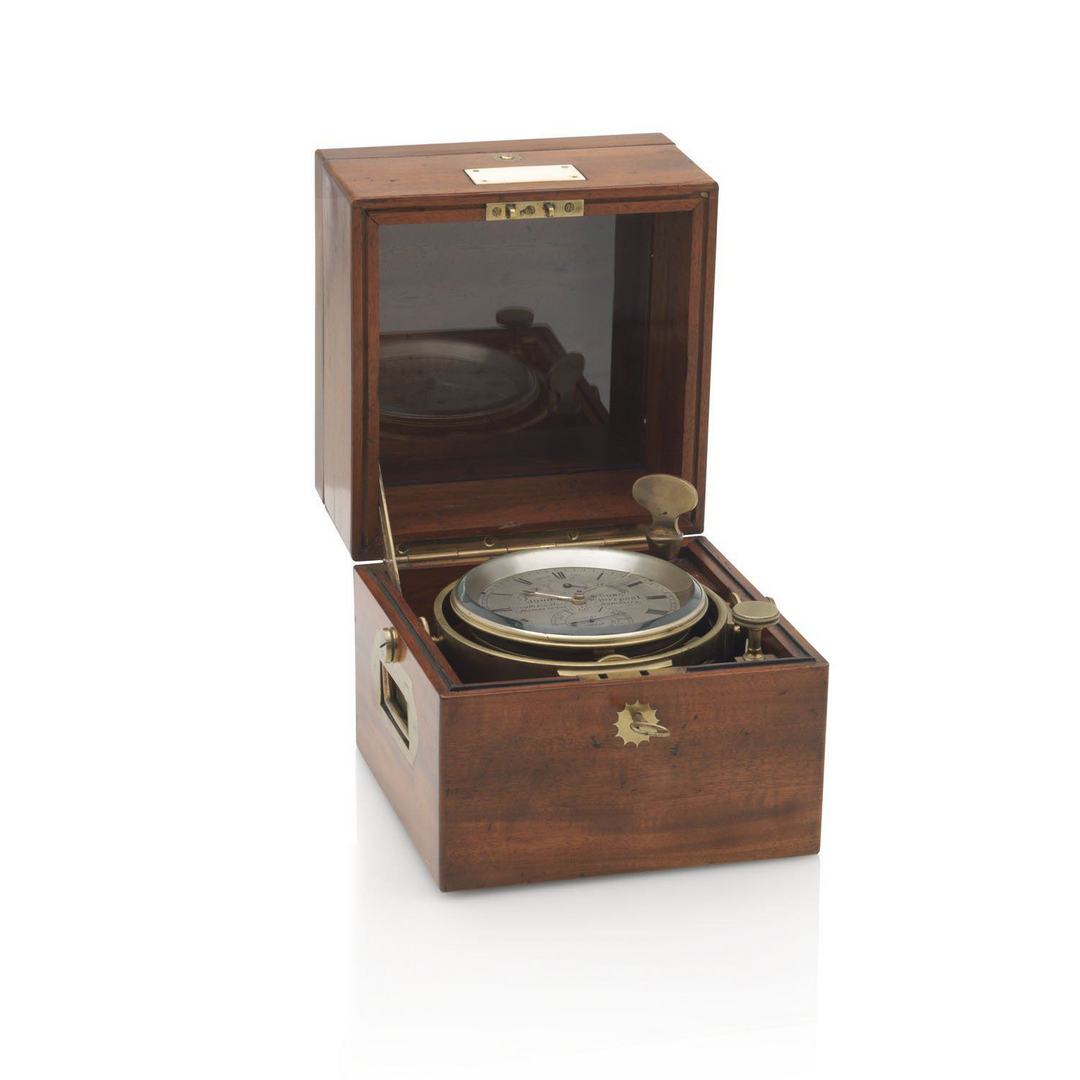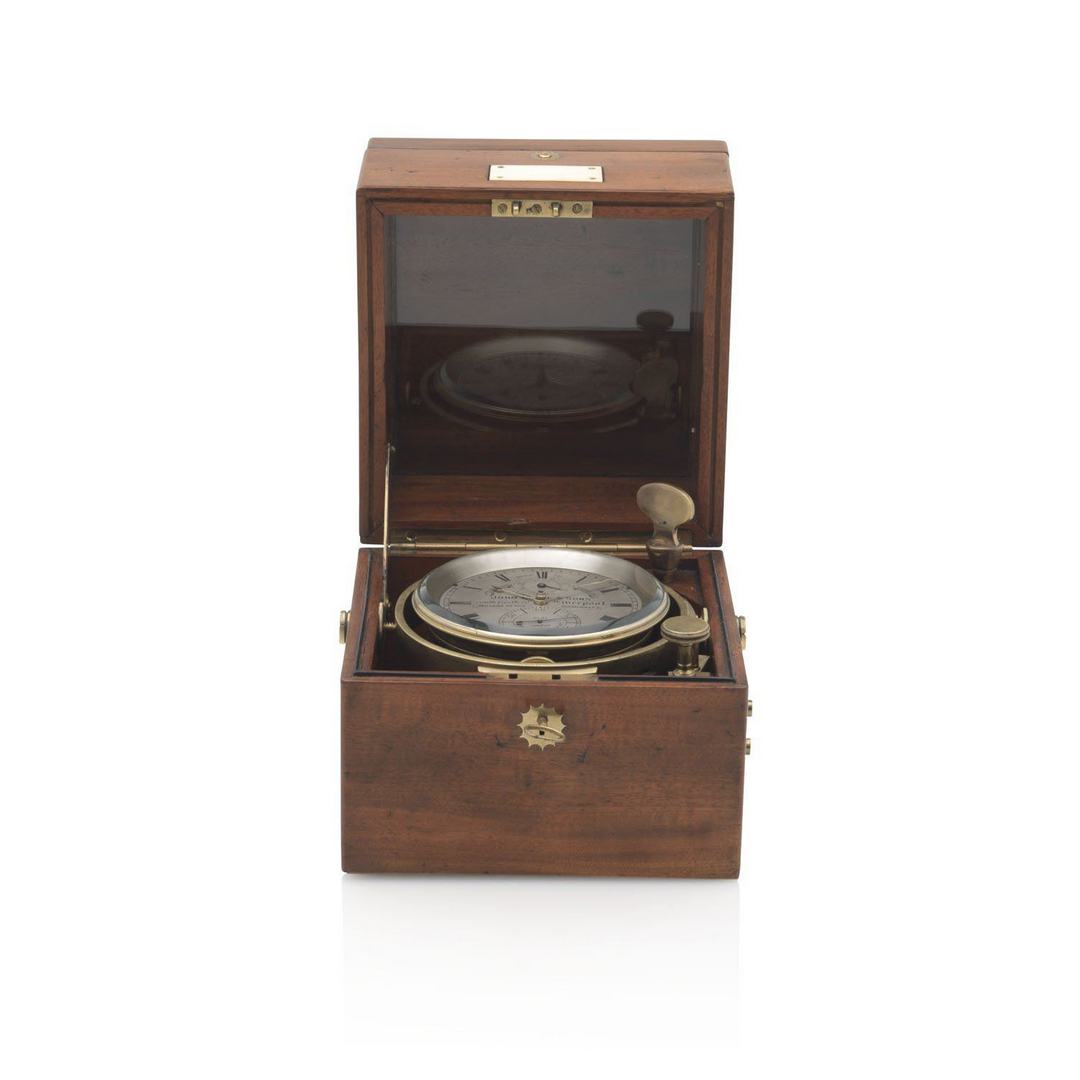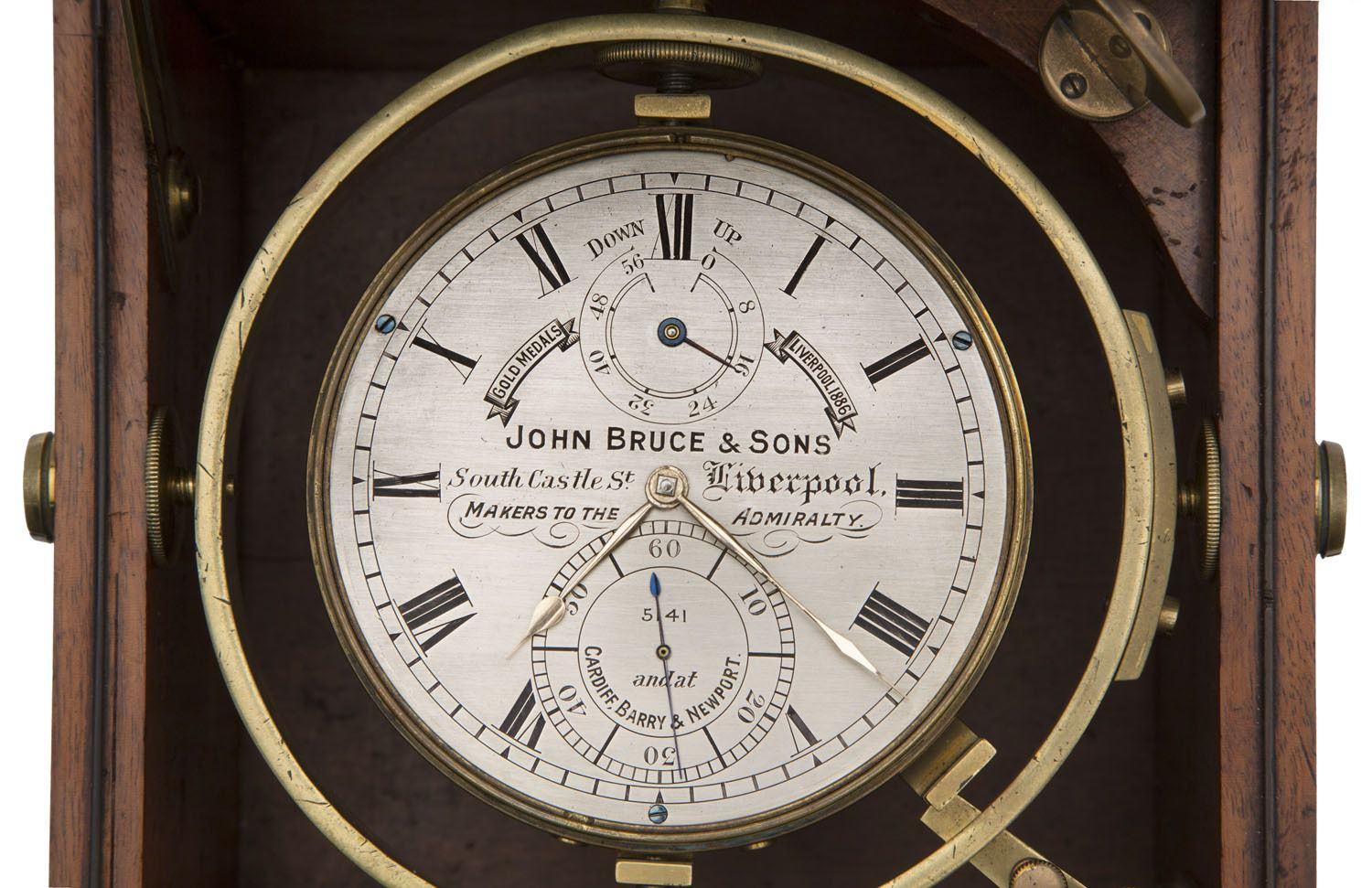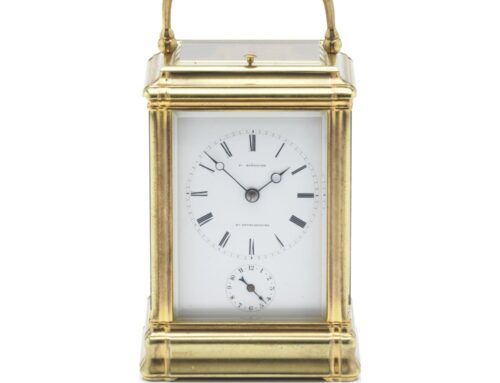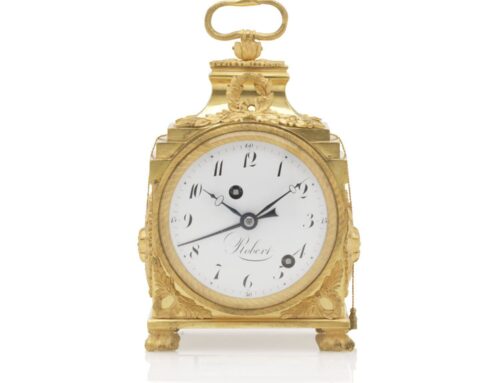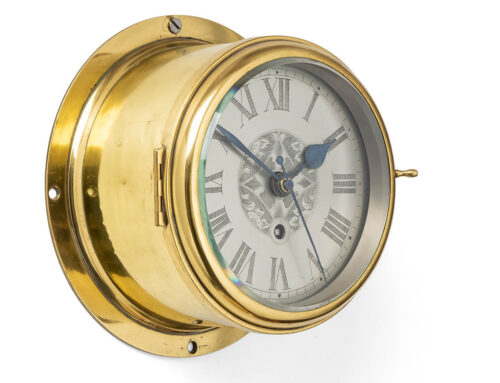Marine chronometer
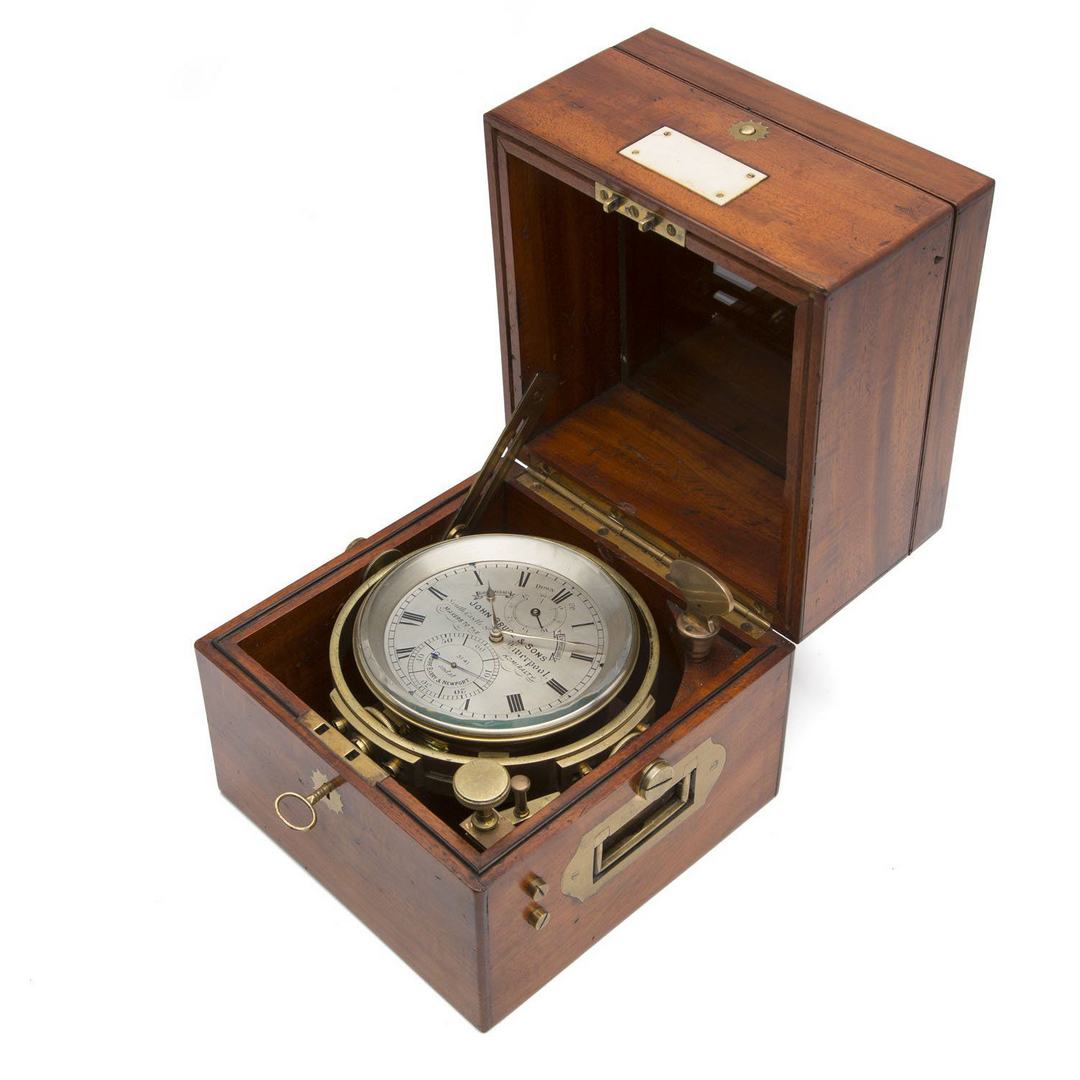
Description
English marine chronometer, signed JOHN BRUCE & SONS LIVERPOOL, ca. 1890
Beautiful mahogany chronometer with an unusually engraved dial
Case
The austere mahogany case has the classic shape of a chronometer, with a lower case, a glazed upper case and a lid (a so-called three tier case). There are two counter-sunk brass carrying handles to the sides of the lower case. The front has a lock with key. In the front of the upper case is a bone plaque on which the number of the clock could have been indicated. As usual the movement is housed in a brass bowl, which is gimballed. This bowl can be secured for transport. The winding key, which has a counter click, so that it cannot be turned in the wrong direction, is situated in the top right corner in the case.
Movement
The 56-hour movement is constructed between two round plates. It is driven by a spring in a spring barrel via a chain fusee and has a chronometer escapement, a so-called Earnshaw spring detent escapement with balanced and temperature compensated balance with a blued-steel helical spring.
Dial
The time is indicated by a pair of gilt brass hands on a silvered dial with a black Roman chapter ring. There is a separate seconds ring with an extremely slender, blued-steel hand. In the middle are, in addition to the number of the chronometer (5141), the names of three important ports in South Wales: Barry, Cardiff and Newport. Above the middle of the dial is an up and down dial, which indicates the state of winding, 0 – 56 (hours) with a blued steel hand. This ring is flanked by the indication ‘Gold Medals Liverpool 1886’, which refers to the prize Bruce received at the International Exhibition of Navigation, Commerce and Industry in Liverpool in 1886. Between both secondary rings is the engraved elaborate
signature: JOHN BRUCE & SONS, South Castle S t , LIVERPOOL, MAKERS TO THE ADMIRALTY. The
dial is protected by a flat, faceted glass.
Background
After John Harrison had developed the marine chronometer around the middle of the 18th century, navigation at sea was greatly improved and the number of shipwrecks greatly reduced. In the 19th century the production of chronometers was significantly increased as no seafaring vessel could do without one. This lasted well into the 20th century until GPS systems became generally used for determining a ship’s position at sea.
The maker
It may be clear that John Bruce was an eminent craftsman and produced excellent chronometers. He began his career in 1867 and not only became maker to the admiralty but also maker to the Queen of Spain. As late as 1972 the company was sold to J. Sewell.
Literature
Tony Mercer, Chronometer Makers of the World, Londen, 2004, p. 195

